History of MS at IOCB
How It All Began
The history of mass spectrometry at the IOCB began at another workplace of the former Czechoslovak Academy of Sciences, namely at the Institute of Physical Chemistry. Located in Máchova Street, Vinohrady, it was a center of mass spectrometry from the 1950s. In 1962, the Institute of Physical Chemistry managed to purchase the Soviet spectrometer MCH1303. At that time, the director of the IOCB, František Šorm, decided to send one of his employees, the organic chemist Ladislav Dolejš, to this institute for long-term internship to work with Vladimír Hanuš on elucidating the structure of organic molecules. In the following years, they wrote a number of joint publications on determining the structure of organic substances, especially alkaloids. Ladislav Dolejš later founded the Laboratory of Mass Spectrometry at the IOCB and headed it for many years. The first mass spectrometer in our institute, the Soviet MCH1303, served until 1972, when it was given to the Faculty of Science of Charles University in Prague. However, it has never been put into operation there again.
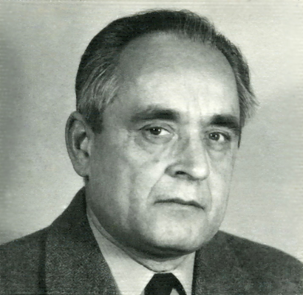
The First Spectrometer
The first mass spectrometer at the IOCB, the Soviet MCH1303, was manufactured at the Spetsial'noe konstruktorskoe biuro analiticheskogo priborostroenia Akademii nauk in Leningrad. The instrument was first placed at the Institute of Physical Chemistry in Máchova Street and later, in 1967, moved to Dejvice. The Laboratory of Mass Spectrometry was located on the first floor of the central part of building A, next to the NMR laboratory and office. The space is currently used as an office (A.1.53), a kitchen (A.1.54) and a cold room (A.1.55). The MCH1303 was an electron ionization, single-focusing magnetic sector spectrometer. The vacuum system consisted of a two-stage oil pump VN 461M and two diffusion mercury pumps with a cold trap. The mass range was up to m/z 600, the resolution around 450. The samples were introduced through a glass probe with a metal flange, whose aluminum seal had to be changed after each measurement. The cathode of the ion source often deformed upon heating, which changed the direction of the emitted electrons and dramatically decreased the sensitivity of the device. The spectra were plotted on paper using a strip chart recorder. Within one day, it was possible to record the spectra of two to three samples. The instrument maintenance including ion source cleaning was done by Jana Nezbedová.
MS902 Mass Spectrometer
The second spectrometer at the IOCB was the British MS902 (AEI Scientific Apparatus Ltd.), installed in 1969. It was a double-focusing sector instrument in straight geometry (EB). The sample was introduced into the electron ionization source either directly or via a gas chromatography column. The spectrometer had excellent ion optics, which made it possible to measure with good sensitivity even at high resolution. The maximum resolution was 70,000, mass accuracy around 3 ppm. At the time, it was probably the best commercially produced spectrometer in the world. The spectra were recorded on light-sensitive paper, from higher to lower masses. For the analysis of mixtures, a PYE 104 gas chromatograph was connected to the spectrometer using a Watson-Biemann separator. Jaroslav Jirmus from the IOCB electronic workshops helped with the maintenance of the spectrometer. By means of the MS902 spectrometer, insect pheromones and defense compounds, for instance 1-nitropentadecene in termites or pyrido[2,3-b]pyrazins in springtails, were identified for the first time in Czechoslovakia. The spectrometer was used for 17 years, until 1986.
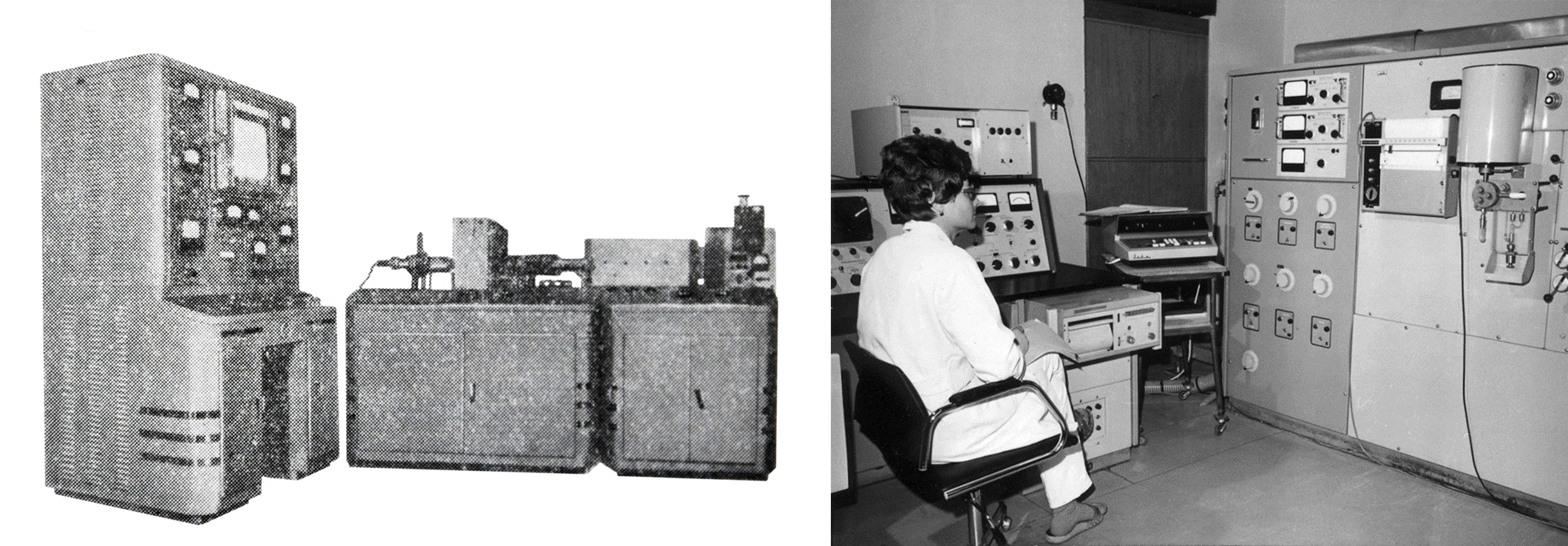

Laboratory 5
From the end of the 1960s until the mid-1980s, the mass spectrometry laboratory was located in the room 5 in the first basement of the IOCB main building. The laboratory was entered from the adjoining office of Ladislav Dolejš. This is where women's locker rooms (A.01.44) are now. As can be seen from the drawing made around 1980, the MS902 mass spectrometer and its control unit (console) stood in the middle of the room. The rails next to the spectrometer were utilized for moving the magnet, and the long shelf by the wall on the left for developing the spectra. The stairs next to the left window were used to exit through the window outside the building where Dewar's vessel was located. Liquid nitrogen was poured from it through a brass tube with a funnel into a vessel in the laboratory. There was also a Bulgarian calculator Elka 21, which could only add, divide, and multiply.
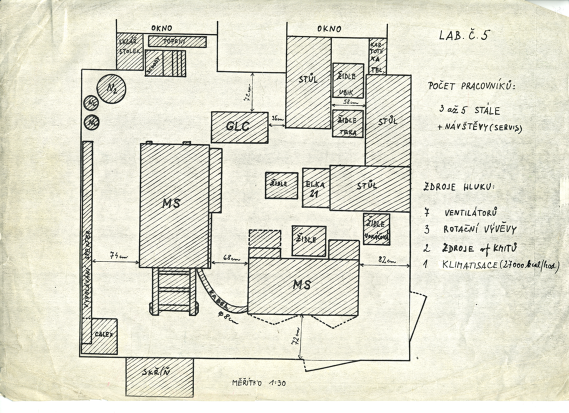
The Purchase of a ZAB EQ Spectrometer
The MS902 offered only electron ionization, which limited the usability of this instrument. The growing need for studying higher-molecular-weight substances and the discovery of FAB and LSIMS ionization techniques in the early 1980s led to the idea of purchasing a new device. At that time, the Mass Spectroscopy Group was headed by Karel Ubik. After careful consideration, it was decided to purchase a ZAB EQ sector spectrometer (VG Analytical). In the era of the centrally planned economy in socialist Czechoslovakia, it was not possible to buy directly from abroad; the purchase had to be made through a foreign trade company (PZO KOVO). Negotiations on the purchase and financing of the device were complicated and lengthy. It was difficult to obtain export licenses, because Western states restricted the sale of high-tech equipment to socialist countries. The new mass spectrometer was purchased after several years of effort in 1986. At that time, it cost almost 800,000 pounds, which corresponded to more than 16 million foreign exchange crowns (Kcs fco).
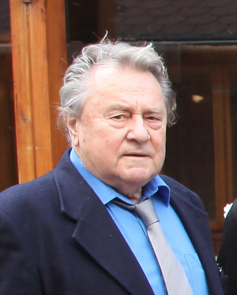
Site Preparation and the Installation of ZAB EQ
The ZAB EQ spectrometer manufacturer, VG Analytical, had strict requirements for the placement of the instrument. Therefore, a new laboratory had to be built in rooms 31 and 32 in the first basement of the main building (today men's locker rooms, A.01.89). The floor under the spectrometer had to be adapted to eliminate the transmission of building vibrations. The construction work lasted from January until July 1987. In the meantime, the spectrometer was assembled and tested in Manchester. During several visits, the user training of Karel Ubik took place. A maintenance course was given to Karel Ženíšek from the IOCB Development Workshops, who then helped to maintain and repair the instrument for many years. In September 1987, the spectrometer was dismantled in Manchester, loaded onto a truck and taken to Prague. Two company engineers re-assembled the spectrometer for 14 days, and it took another two months to fine-tune it and achieve the specifications required. The spectrometer was completely taken over in February 1988.
ZAB EQ Mass Spectrometer
ZAB EQ, a hybrid spectrometer with a BEQQ configuration, was mostly used with electron ionization (EI) and fast atom bombardment (FAB) ionization, but it also enabled chemical ionization (CI) and cesium ion bombardment ionization (liquid secondary-ion mass spectrometry, LSIMS). The sample could be introduced into the ion source directly or using the Hewlett-Packard 5890 gas chromatograph. It could be connected to the HPLC by means of a moving polyimide belt interface, which, however, did not work well because of sample deposition instability. The spectrometer offered various types of MS/MS experiments and the recording of energy spectra by means of MIKES. The mass range was up to 10 kDa and the maximum resolution was 125,000. After the release of import restrictions in 1989, the obsolete computer was replaced by an AlphaStation with the OpenVMS operating system. The ZAB EQ was used to study the structures of many synthetic and natural substances, including nucleosides and their derivatives, saponins, flavonoids, ecdysteroids and peptides. The spectrometer was utilized for 21 years. At the beginning of 2009, it was dismantled. Some components were handed over to the J. Heyrovsky Institute of Physical Chemistry, while some others later became the first exhibits of the Museum of Mass Spectrometry at the IOCB.
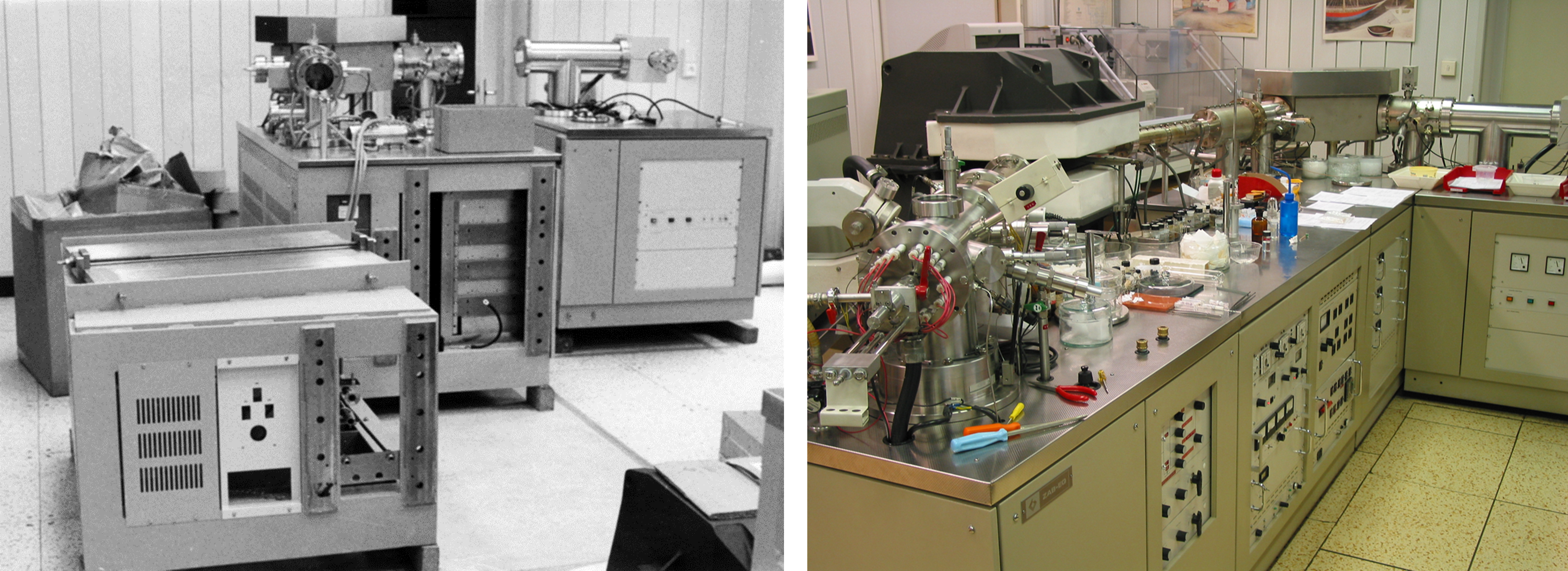
The Mass Spectrometry Laboratory at the IOCB
The laboratory was originally established as one of the service (so-called supportive) units at the IOCB. At that time, it was not usual to acknowledge the scientific contribution of experts from these laboratories, albeit substantial, by co-authorship of publications. The status of the laboratory has changed several times. In the beginning, it was part of the Department of Organic Chemistry (until 1981) and then of the Department of Natural Products (until 1990); for the next eleven years, the laboratory operated as an independent department called Central Laboratory of Mass Spectrometry. In 2003, the laboratory was incorporated into the newly established Department of Organic Structural Analysis, where it remained until the reorganization in 2007, associated with the transformation of the institute into a public research institution (v.v.i.). Since then, it has been an independent research-service group. In 1997-2006, the MS laboratory also comprised the Analytical Laboratory, focused on the elemental, volumetric, gravimetric, and optical analysis of organic compounds.
The Beginnings of Proteomic MS
The ionization techniques and parameters of the ZAB EQ spectrometer did not allow the study of large biological macromolecules. Therefore, a MALDI time-of-flight spectrometer Reflex IV (Bruker Daltonics) was purchased at the beginning of 2002, together with the Proteineer robot (Bruker Daltonics) for processing samples from polyacrylamide gels. The Proteineer sp unit made it possible to scan the gel, select proteins, cut them, and transfer them to microtubes, while the Proteineer dp unit performed enzymatic digestion and the loading of the samples and matrix onto a MALDI plate. After the plate was inserted into the spectrometer, the automatic program of spectrum recording and data evaluation started. Over time, the capacity of the robotic system proved to be too large for the needs of the institute, and the system was rarely used. However, the MALDI technique has become an important part of the laboratory's portfolio of ionization techniques. Reflex IV was used until September 2011, when it was sold to the Faculty of Science of Charles University.
Spectrometers at the Department of Natural Products
Mass spectrometry has been very important for the research of natural compounds at the IOCB. In the 1980s, the MS laboratory was even part of the Department of Natural Products. The growing need to analyze a higher number of samples using chromatography and the availability of simpler benchtop spectrometers on the market led to the purchase of instruments for the Department of Natural Products. The first instrument, a gas chromatograph-quadrupole mass spectrometer Fisons MD-800, was installed in 1992. It was followed in 2000 by a Varian Saturn 2000R ion-trap GC/MS, which was mainly employed for determining double bond positions using chemical ionization with acetonitrile. A few years later, a two-dimensional capillary GC with a fast Pegasus 4D TOF analyzer (LECO) was purchased and used for the analysis of very complex mixtures and the detection of minor components. These instruments were used for studying volatile natural products such as insect pheromones and defense compounds, cuticular hydrocarbons, plant volatiles, essential oils, and lipids. The first benchtop LC/MS, an ion trap Finnigan LCQ Classic, was purchased in 1999. It was used for analyzing non-volatile natural compounds.

Spectrometers in Other IOCB Laboratories
Mass spectrometry slowly ceased to be the exclusive domain of a specialized central laboratory. In the first years of the new century, smaller mass spectrometers began to appear also in the laboratories of synthetic chemists, who used them to control the course of organic reactions. One of the first LC/MS systems with electrospray ionization was Waters Micromass ZQ MS, which was in operation in the laboratory of Ivan Votruba from 2002. From 2009, the laboratory of Ilya Lyapkalo used a benchtop GC/MS system with a quadrupole analyzer, Agilent 5975B Inert MSD.
The Expansion of the Group and MS Services
In 2005, Josef Cvačka became the head of the Mass Spectrometry Group. He had come from the Department of Natural Products at the IOCB. Thanks to the access to Finnigan LCQ Classic and Waters Qtof Micro spectrometers, the portfolio of services offered by the group was expanded by electrospray ionization. In addition to faster analyses of samples of small molecules, electrospray made it possible to expand expertise in proteomic MS. In 2006, a quadrupole GC/MS MSD (Agilent) was purchased; one year later, it was made available as an open-access instrument. Since 2008, a Waters GCT Premier GC/MS with a TOF analyzer has been used for determining the elemental composition of sufficiently volatile compounds from their EI or CI spectra. At the beginning, this instrument was shared with the group of I. Valterová. The MS group gradually grew and increased attention was paid to training students. In 2007, the group became an independent research-service group at the IOCB transformed into a public research institution.
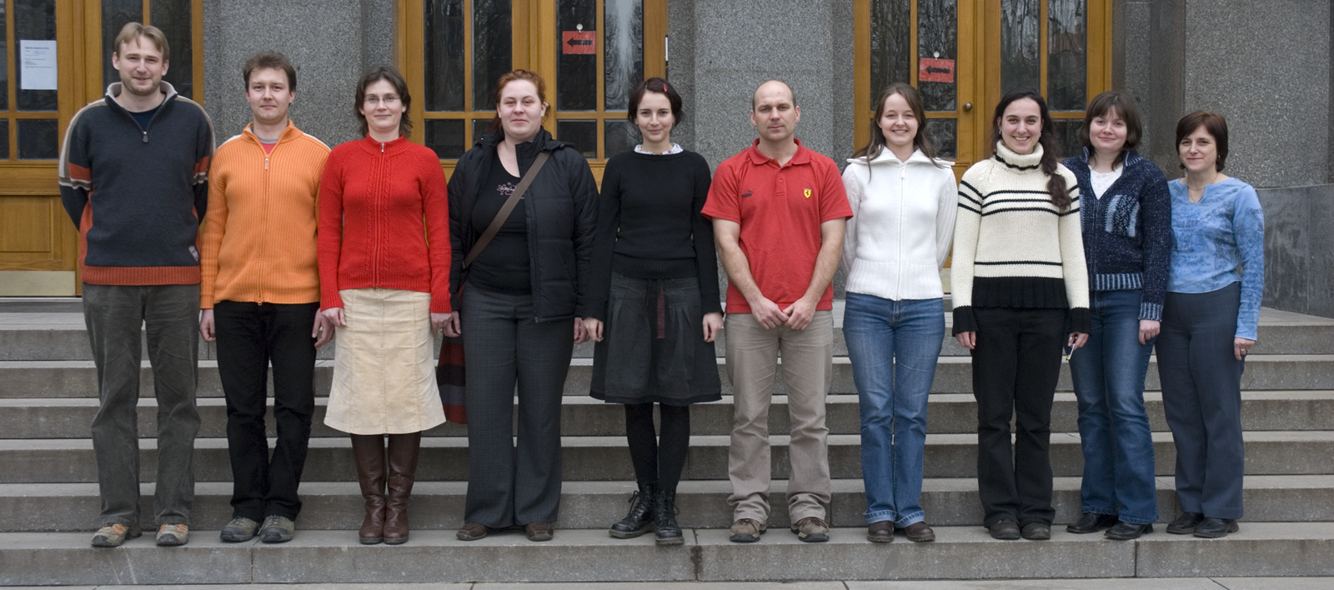
Detlef Schröder
Detlef Schröder, an exceptionally talented scientist in the area of physical organic chemistry and mass spectrometry, worked at the IOCB in 2006 2012. He received his PhD in chemistry from the Technische Universität Berlin in the laboratory of Helmut Schwarz and stayed there for another fourteen, very successful years. He was a co-author of many ground-breaking discoveries in the field of physical chemistry, such as the concept of two-state reactivity. Detlef Schröder came to the IOCB in 2006 and founded the Spectroscopy and Physical Organic Chemistry group. In 2011, he was promoted to Distinguished Chair, the highest scientific position at the IOCB. His research in Prague focused on gas-phase ion chemistry and the application of electrospray ionization as an interface for studying chemistry of ions in the condensed phase. He studied mainly reaction mechanisms, such as the pseudo-epimerization of Tröger bases and the role of palladium clusters in the Suzuki–Miyaura reaction. He also contributed to the research of infrared multiphoton excitation and of ion mobility. Mass spectrometers in his laboratory included ion traps and triple quadrupoles (Thermo), and from 2010 also Synapt G2 (Waters) for ion mobility experiments. Detlef Schröder died in 2012, at the age of 49.
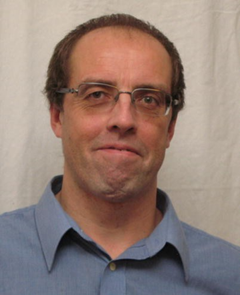
LTQ Orbitrap XL Spectrometer
The declining interest in FAB ionization, problematic maintenance of the aging ZAB EQ instrument, and the complexity of operating the device led to the idea of purchasing a reliable high-resolution spectrometer with electrospray ionization. This was the LTQ Orbitrap XL hybrid spectrometer acquired in 2007. Orbitrap technology was completely new at the time, launched in 2005. In the Czech Republic, it was the second spectrometer of this type. The instrument was characterized by exceptional stability and reliability, and it enabled significant acceleration of sample analysis. In January 2008, LTQ Orbitrap XL was installed in the laboratory 107 in the NE wing of the main building (now A.1.65). The laboratory was established on the premises that were vacated after the staff of the Institute of Molecular Genetics left for their new building in Prague – Krč. The Orbitrap then moved twice: first, because of the gradual reconstruction of the building, to the laboratory 64 in the NW wing (now A.1.33) in 2012 and then, three years later, to the current premises in the SE wing (A.1.83). LTQ Orbitrap XL has been used not only for routine service analysis of small molecules but also for many other projects, for instance lipid analysis.
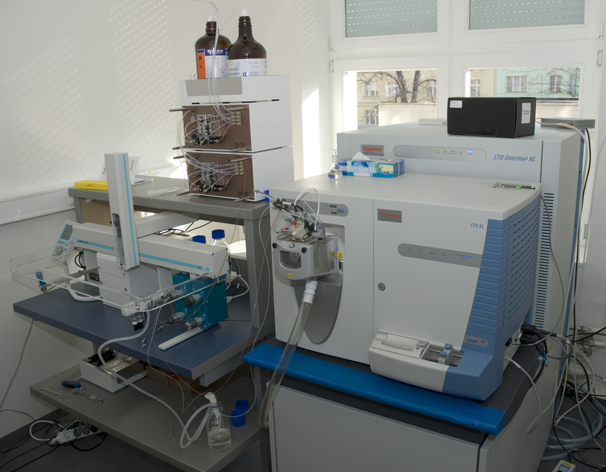
Further Development
Mass spectrometry continued to gain in importance at the IOCB. It was increasingly used not only in chemistry but also in biologically oriented disciplines. The rapid development of the field of mass spectrometry brought new possibilities. The identification of proteins and the characterization of their primary structure became a routine. Quantitative proteomics and later structural proteomics came to the forefront of interest. Large data sets required the use of new programs and bioinformatics approaches. MALDI mass spectrometric imaging became a useful tool for studying the distribution and effects of substances in tissues. MS-based lipidomics developed. In addition to structural analysis, mass spectrometry also began to be employed for highly sensitive and selective quantitative analyses of small and medium-sized molecules. The Mass Spectrometry Group gradually expanded and new instruments enabled more detailed and accurate analyses. Since 2015, the group has been located in the SE wing of the newly reconstructed building A. Mass spectrometry has also been developed and used in other groups, for example to monitor the course of chemical reactions, study pharmacokinetics, and to analyze the structure of natural compounds.

